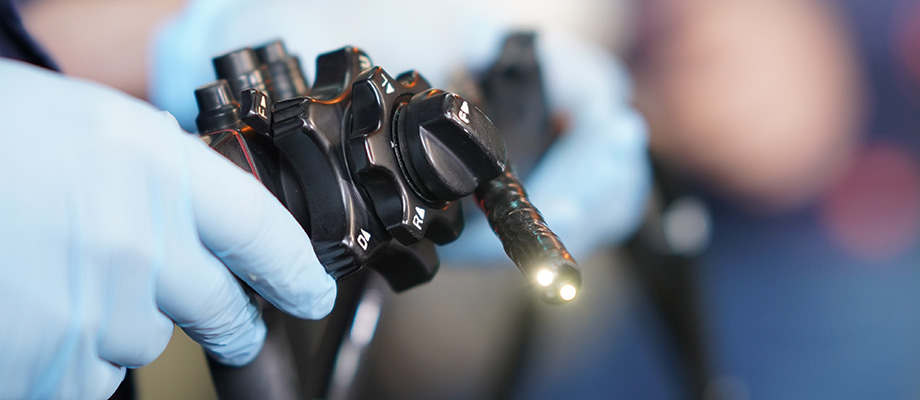
Horse Endoscopy
What is an endoscopic procedure?
Endoscopy is used to evaluate the respiratory tract and is particularly useful in examining horses with respiratory problems and or poor performance. This is carried out by passing an endoscope (a long, thin and flexible camera) up your horse’s nostril, through the pharynx, larynx and down the trachea; the guttural pouches can also be examined.
Our veterinary team can offer endoscopic procedures to patients at either of our clinics or on your yard. Both of our Towcester and Onley clinics are within easy reach from Northamptonshire, Warwickshire, Buckinghamshire and beyond. Coupled with the added comfort of the supportive stocks to ensure your horse is comfortably restrained whilst sedated, owners have a choice about what works best for their horse.
Contact us about horse endoscopy
Reasons for horse endoscopy – what can you see?
Endoscopic procedures will often be recommended to assess a variety of different cases.
The coughing horse:
Endoscopy is often used to assess the coughing horse and reach a diagnosis of equine asthma by checking the appearance and volume of mucous being produced by the lower airways. The endoscope can be used to take samples of this fluid which we send to an external laboratory to assess for bacteria and inflammatory cells to determine the cause of the cough and, if bacteria are cultured, what antibiotics will be most effective in a treatment plan.
Guttural pouch disease:
Each horse has 2 air-filled pouches connecting their throat to their ear structures. Each pouch, known as a guttural pouch, can hold approximately 350ml and is separated by the stylohyoid bone. Several major nerves and blood vessels run through each pouch, yet their purpose is still poorly understood in the equine veterinary world.
Guttural pouch disease is rare, but can affect any horse. Fungal infections can cause erosion of the internal structures and blood vessels, potentially causing epistaxis (nose bleeds); other clinical signs include an inability to swallow along with laryngeal paralysis due to nerve damage. A prompt diagnosis via endoscopic exam is needed for this disease and surgical intervention is available to prevent haemorrhage-related deaths.
Strangles:
This is an endemic disease amongst the UK horse population that is transmitted between horses by direct contact or through the environment, for example by sharing water buckets or if an infected horse snorts and disperses nasal droplets. Diagnosis can be completed via guttural pouch endoscopy. Infected pus can gather in the pouches; using an endoscope allows the treating vet to visualise the area, as well as flush the guttural pouch to collect samples to confirm the presence of strangles bacteria. Guttural pouch washes are often performed 21 days following diagnosis for repeat testing and to ensure that the strangles bacteria is no longer present.
Along with the above examples, horse endoscopy can also be used to visualise the mouth, urethra, bladder and uterus. To discuss this further, contact our team.


